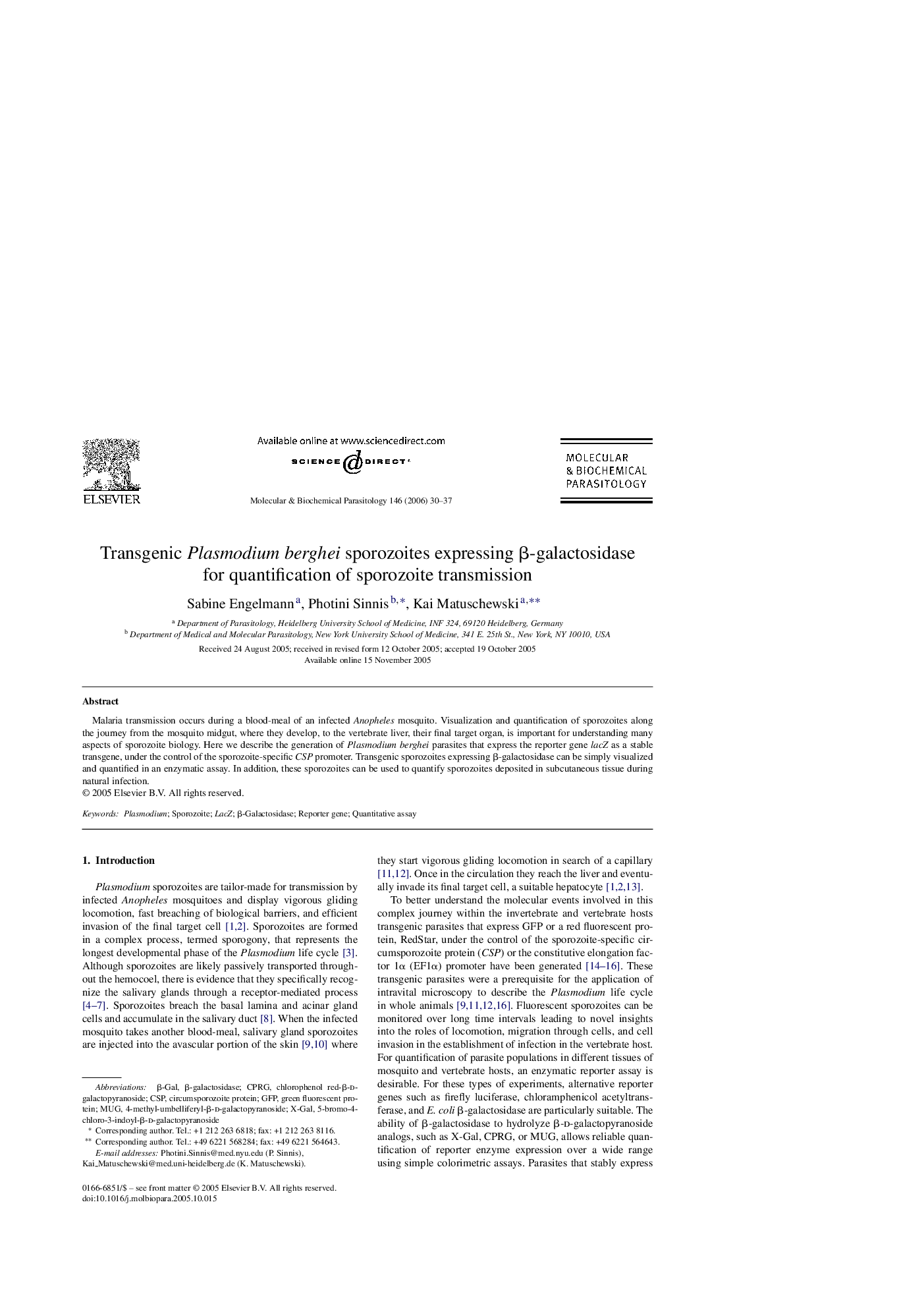| Article ID | Journal | Published Year | Pages | File Type |
|---|---|---|---|---|
| 2830375 | Molecular and Biochemical Parasitology | 2006 | 8 Pages |
Abstract
Malaria transmission occurs during a blood-meal of an infected Anopheles mosquito. Visualization and quantification of sporozoites along the journey from the mosquito midgut, where they develop, to the vertebrate liver, their final target organ, is important for understanding many aspects of sporozoite biology. Here we describe the generation of Plasmodium berghei parasites that express the reporter gene lacZ as a stable transgene, under the control of the sporozoite-specific CSP promoter. Transgenic sporozoites expressing β-galactosidase can be simply visualized and quantified in an enzymatic assay. In addition, these sporozoites can be used to quantify sporozoites deposited in subcutaneous tissue during natural infection.
Keywords
Related Topics
Life Sciences
Biochemistry, Genetics and Molecular Biology
Molecular Biology
Authors
Sabine Engelmann, Photini Sinnis, Kai Matuschewski,
